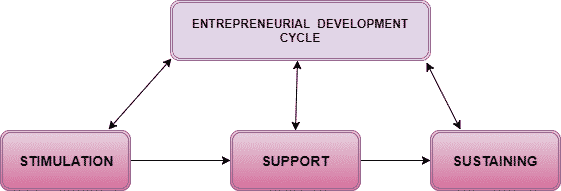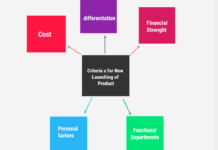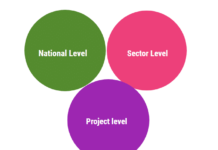Types OF EDP & Entrepreneurial Development Cycle
Depending upon the objective of EDP, the nature of the target group, EDP can be classified into the following types & Entrepreneurial Development Cycle is elaborated.
For more detailed information about EDP click here
I. Entrepreneurship Awareness Training Programme
The objective of such an EDP is to just create awareness this can be achieved by delivering a lecture.
II. Product-Oriented EDP
This EDP is restricted to specific products like textiles, pack food products, casting, etc.
III.Target Oriented EDP
- General for both men & women.
2. women entrepreneurs.
3. Undergraduates.
4. Graduates.
5. Postgraduates.
6. Engineers.
7. Lower income group people.
8. Craftsmen & artists.
IV. EDPs For Existing entrepreneurs.
These types of EDPs are generated by targeting existing entrepreneurs. These EDP assist for quality certification, capacity expansion export & modernization of plants.
Entrepreneurial Development Cycle
EDP starts with stimulation or searching of the potential entrepreneur where only awareness is created those who are potential entrepreneurs get support in establishment units from various organizations like D.I.C, S.S.I, S.I.D.C, I.C.I.C.I, S.I.D.B.I, N.I.E.F.S, etc. Thus they are very useful in setting & sustaining small & micro-units.
A.Stimulation consists
1. Entrepreneurial Education.
2. Planned Publicity for entrepreneurial opportunities.
3. Identification of potential entrepreneurs through a scientific method.
4. Motivational Training.
5. Help and guidance in selecting products and preparing project reports.
6. Making Availability of Techno-Economic Information and Product
Profits.
7. Evolving new products and processes.
8. Availability of Local agencies with trained personnel.
9. Creating an Entrepreneurial forum.
10. Recognition of skills.
B Support consists
1. Registration Of Unit.
2. Arranging Finance.
3. Providing land, shed, etc
4. Guidance.
5. Supply of scarce raw materials.
6. Getting or importing licenses.
7. Providing common facilities.
8. Granting tax relief.
9. Offering management.
C. Sustaining consists
1. Help modernization
2. Help Diversification /Expansion/Substitute production.
3. Additional Financing for full capacity utilization.
4. Differing repayment interest.
5. Diagnostic industrial extension.
6. Production unit’s legislation.
7. Product reservations.
8. Quality testing and Improving Services.
9. Need-based common facilities center.
To understand the concept more clearly click the below-given video



















